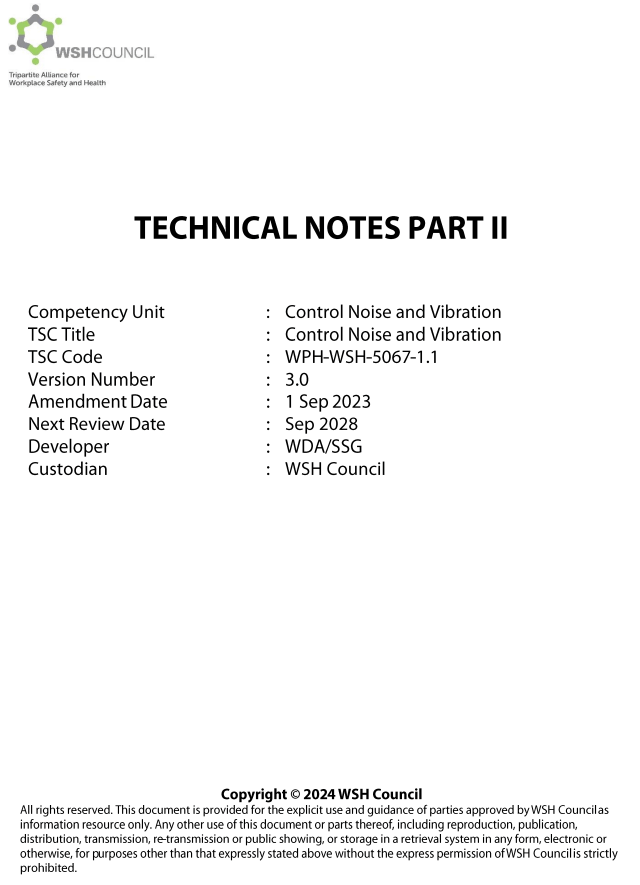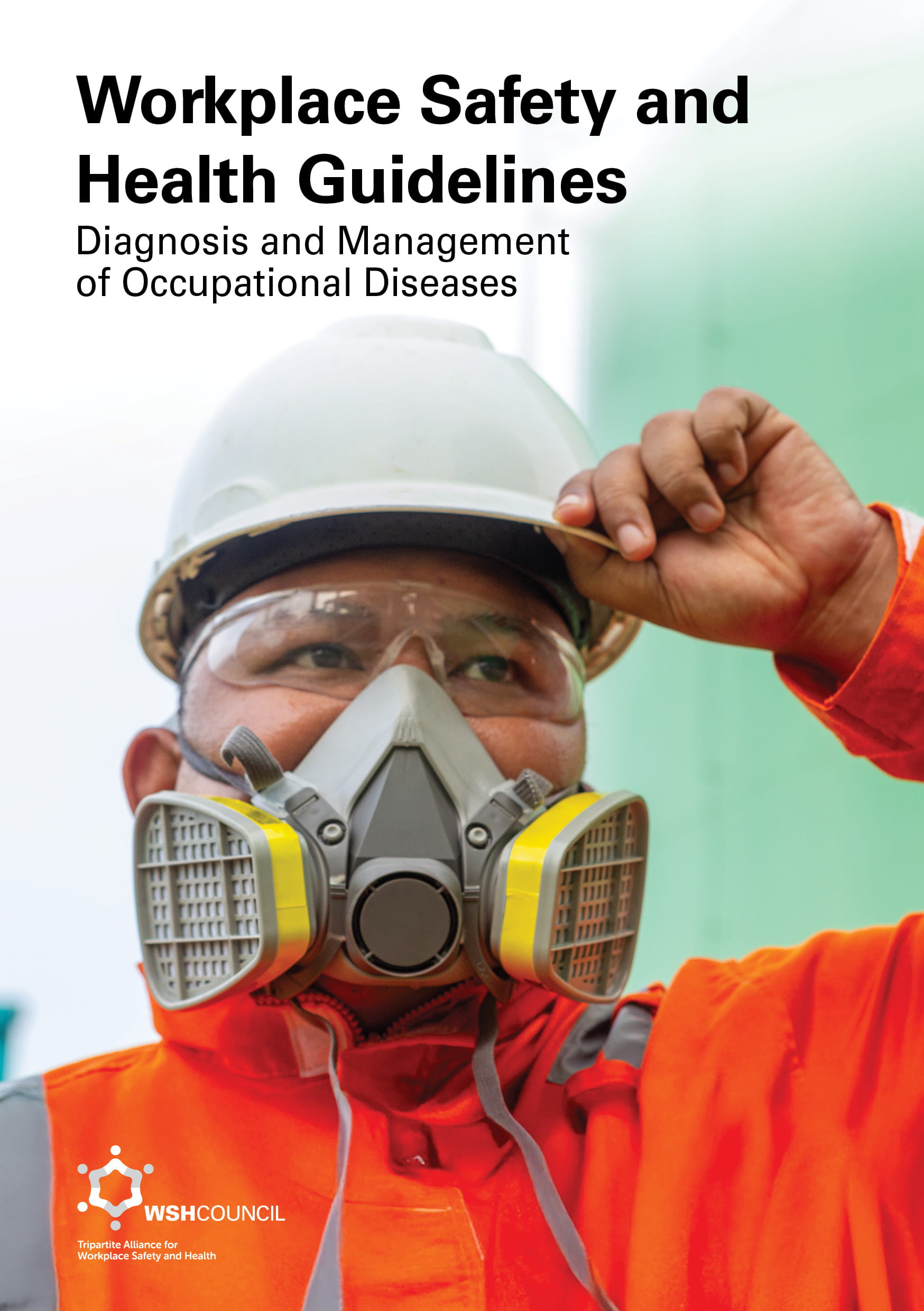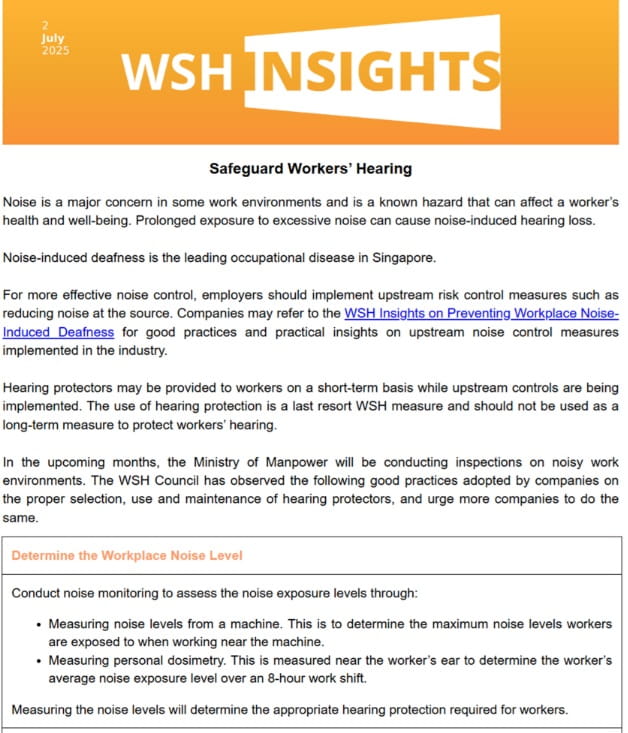About Noise
Learn about workplace noise and noise-induced deafness. Find out about related laws and industry standards.
Definition: Noise-Induced Deafness (NID)
Noise is generated during industrial processes, operations and work activities involving machineries. Typical high noise works include machine stamping, use of pneumatic blower, grinder and machine sawing.
Noise is a prevalent health hazard in the industry. Prolonged exposure to excessive noise can cause noise-induced hearing loss or noise-induced deafness (NID).
NID refers to a permanent loss in hearing sensitivity which leads to communication difficulties and can have a severe impact on the quality of life.
Laws and Industry Standards
As an employer, you are expected to comply with Singapore's WSH laws, and pay particular attention to:
- WSH (Noise) Regulations 2011
- WSH (Medical Examinations) Regulations
- WSH (Risk Management) Regulations
You are also required to monitor and report the noise levels in your company if your workers are likely to be exposed to excessive noise.
Refer to the noise monitoring report on MOM website for more information.
In addition, you should observe relevant industry standards, such as:
CP99: Code of practice for industrial noise control
SS549: Code of practice for selection, use, care and maintenance of hearing protectors
SS602: Code of practice for noise control on construction and demolition sites
Please refer to the WSH (Approved Codes of Practice) Notification for the full list of approved Codes of Practice.
Statistics
- NID is one of the top three types of occupational diseases in Singapore.
- 80% of workplaces had static noise levels greater than 85dBA, based on noise monitoring results submitted to MOM from 2017 to 2019.
- The Manufacturing industry continued to be the top contributor to NID cases in 2019.
Refer to Workplace Safety and Health Reports for the latest WSH National Statistics Report.






